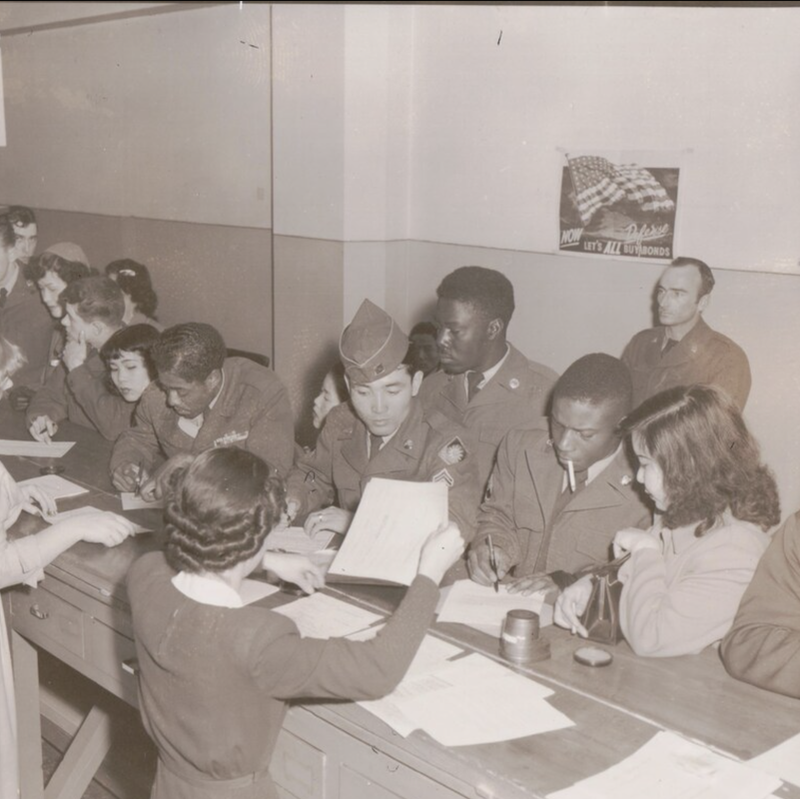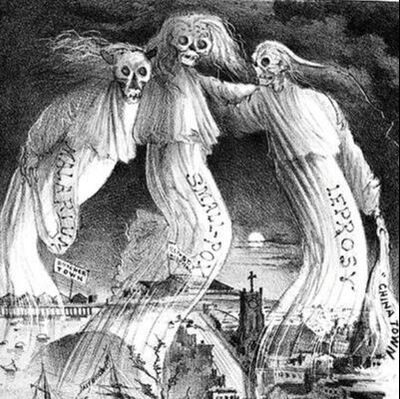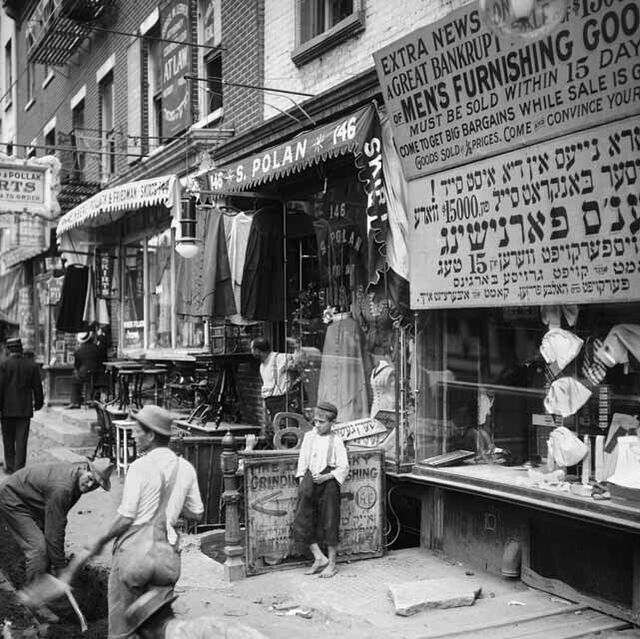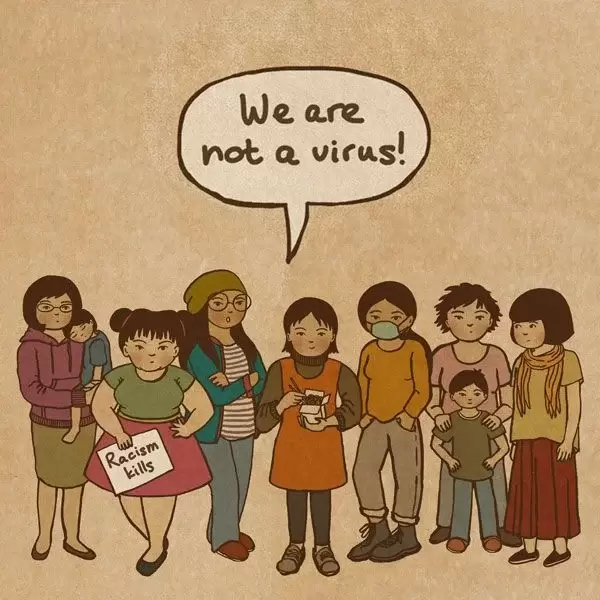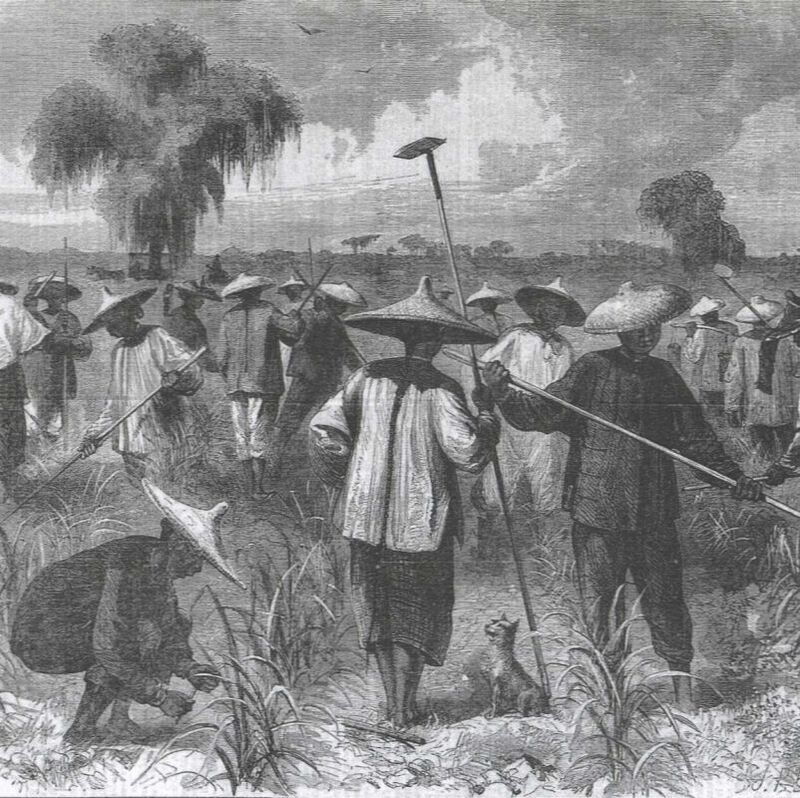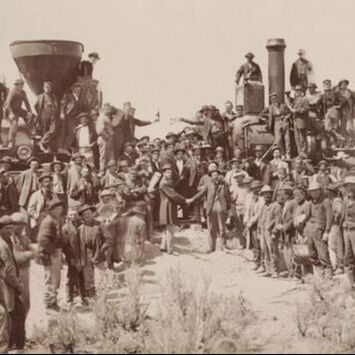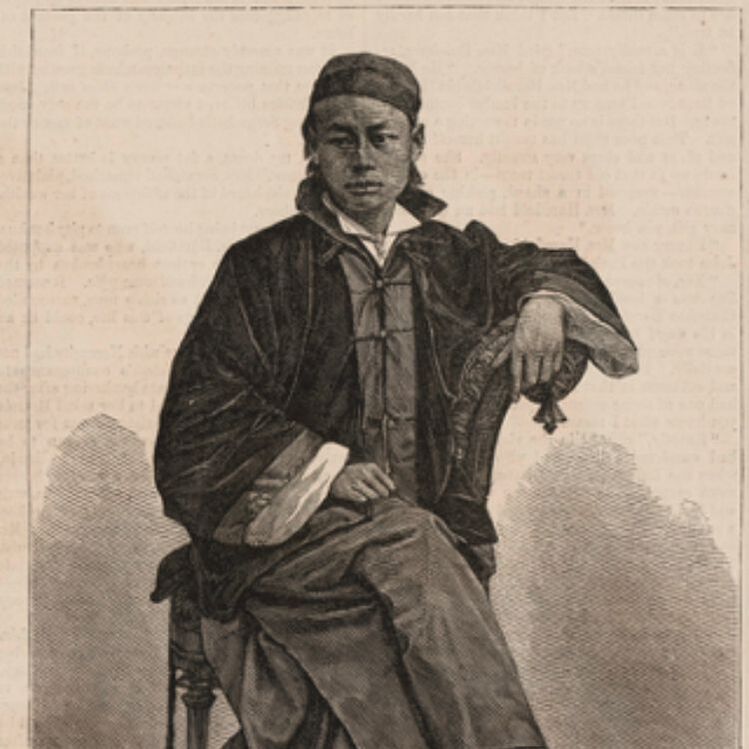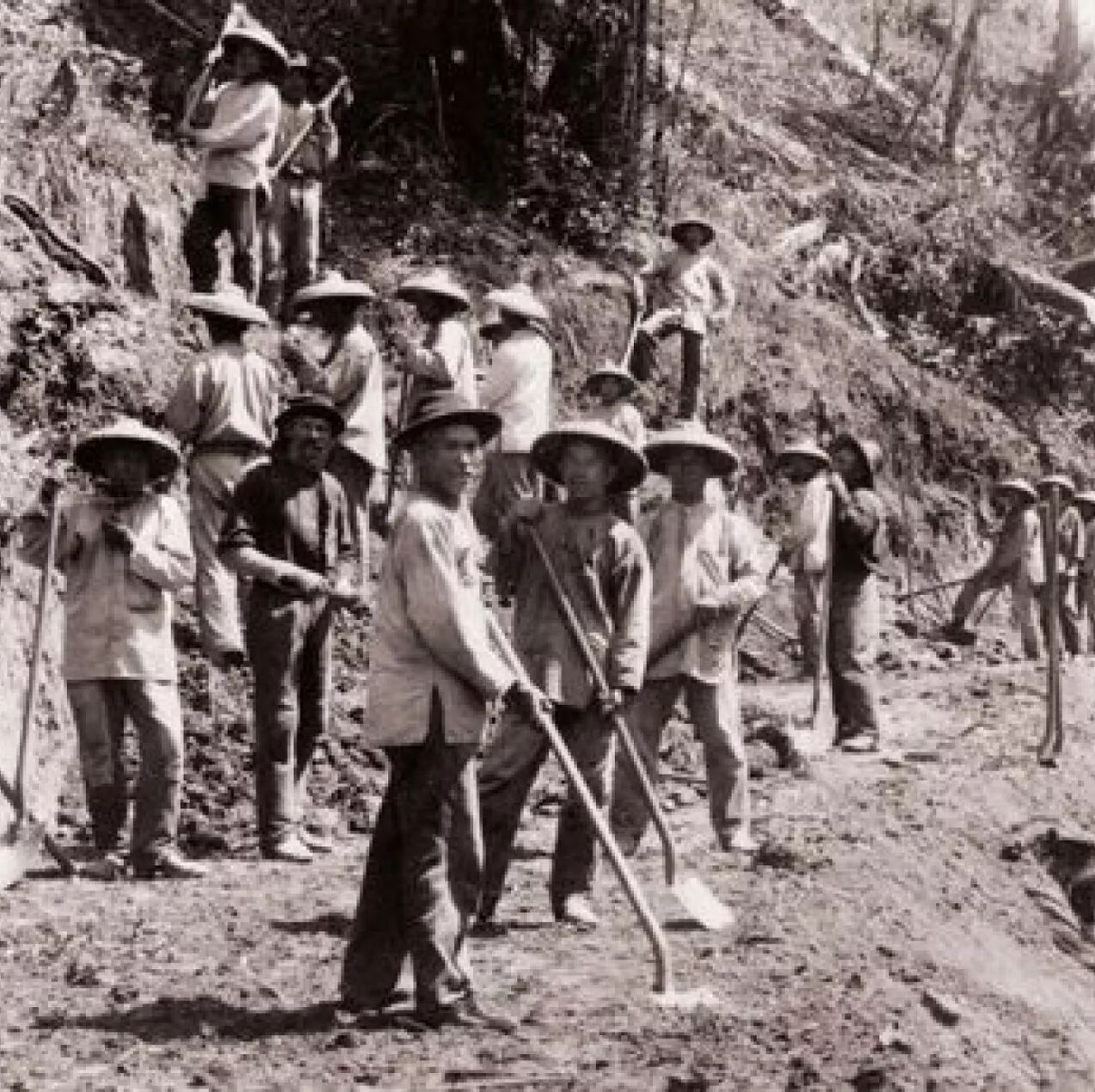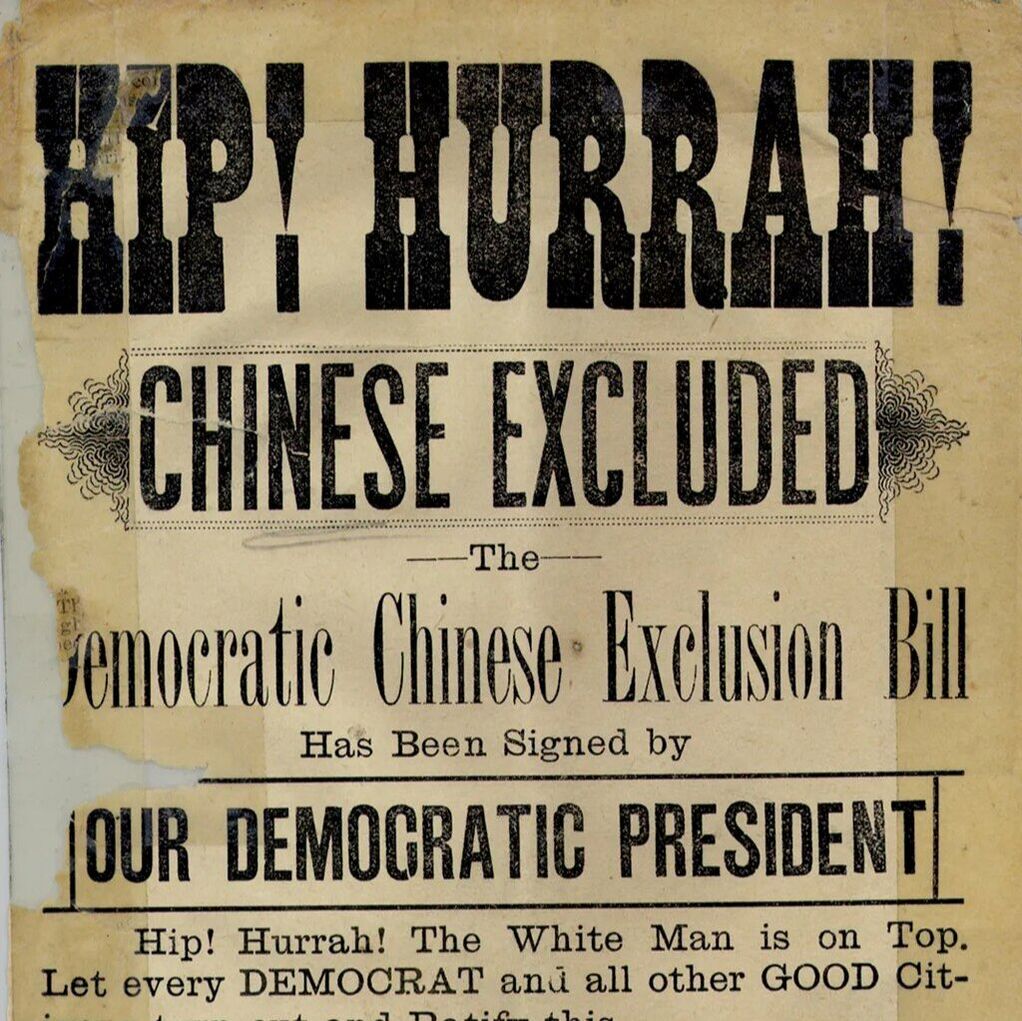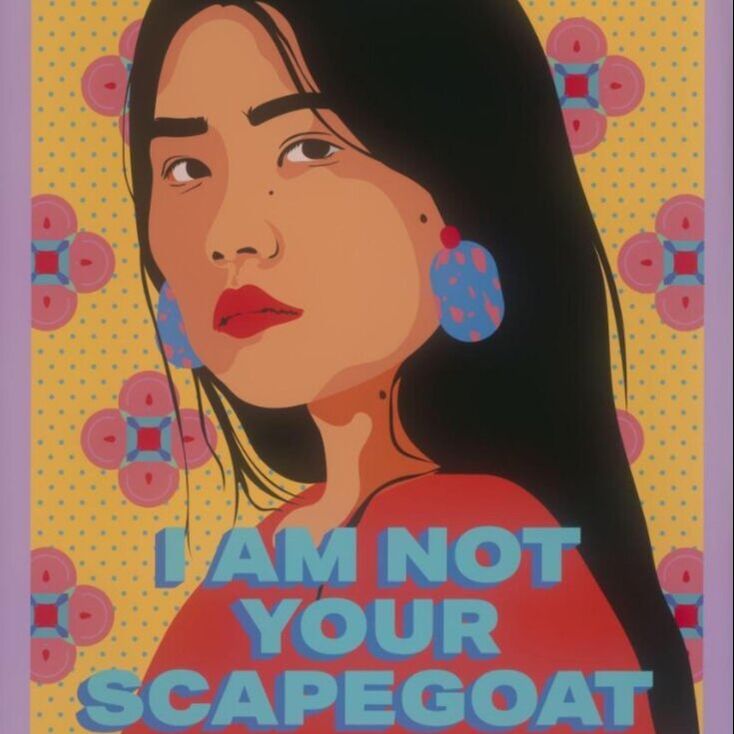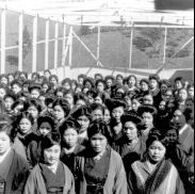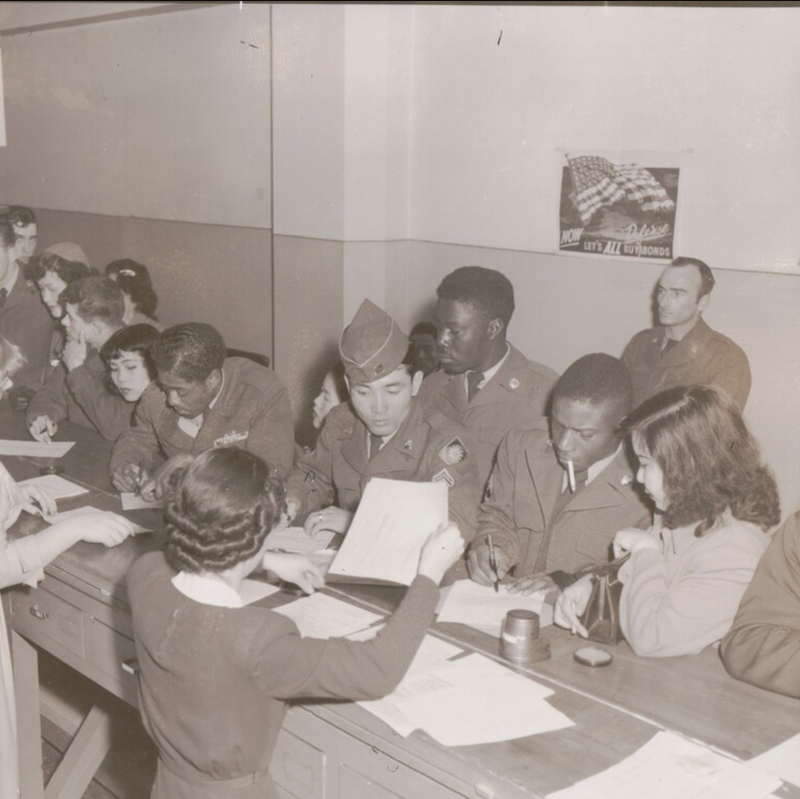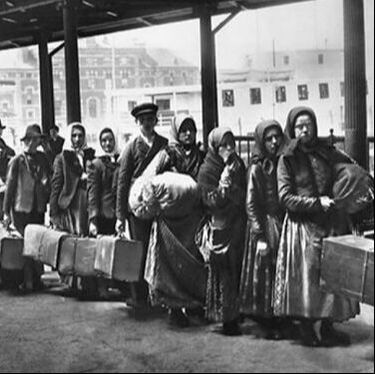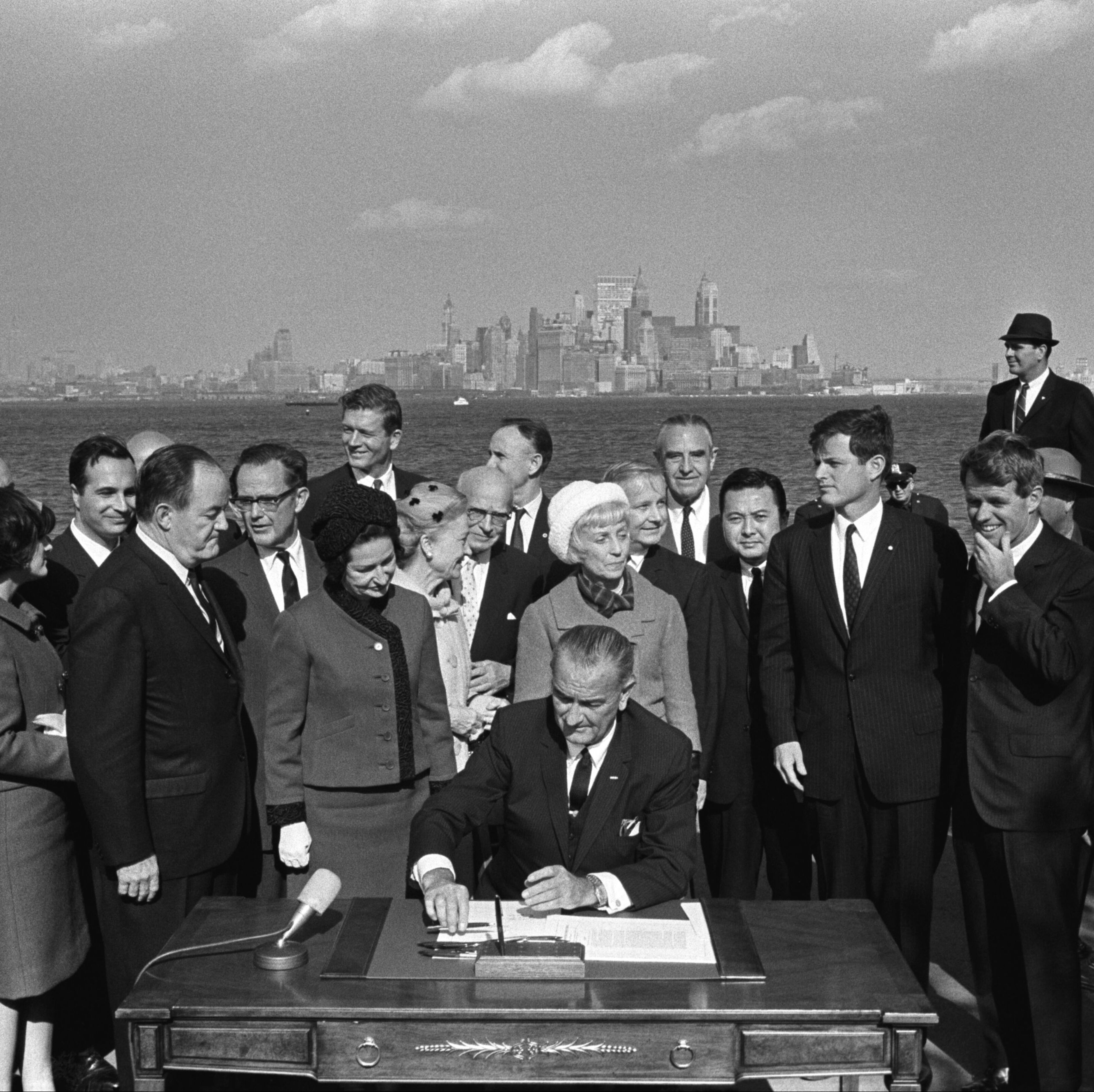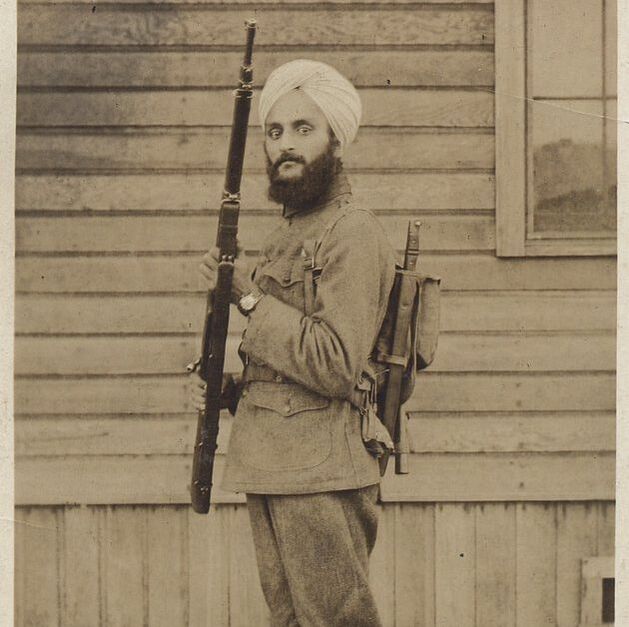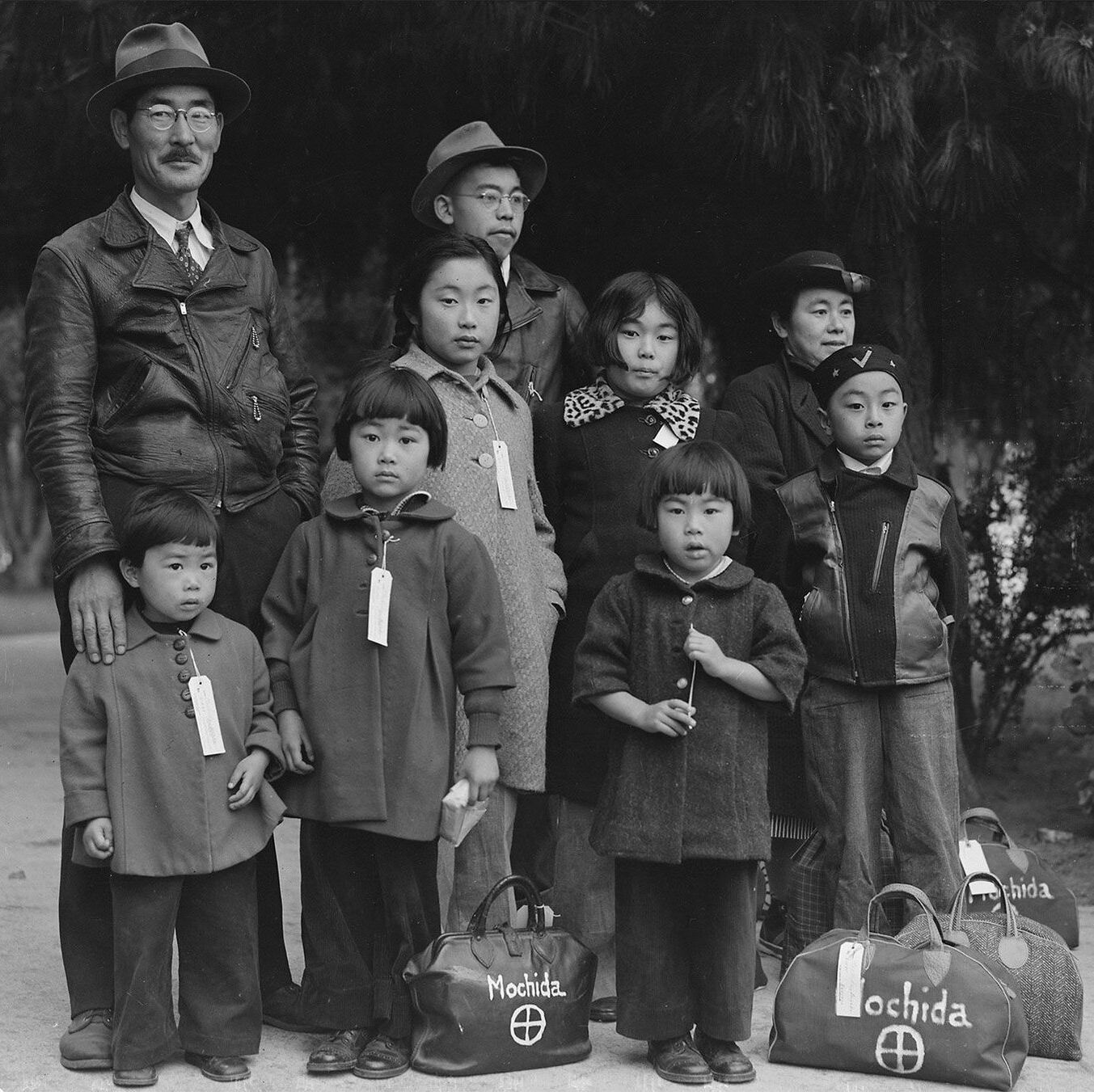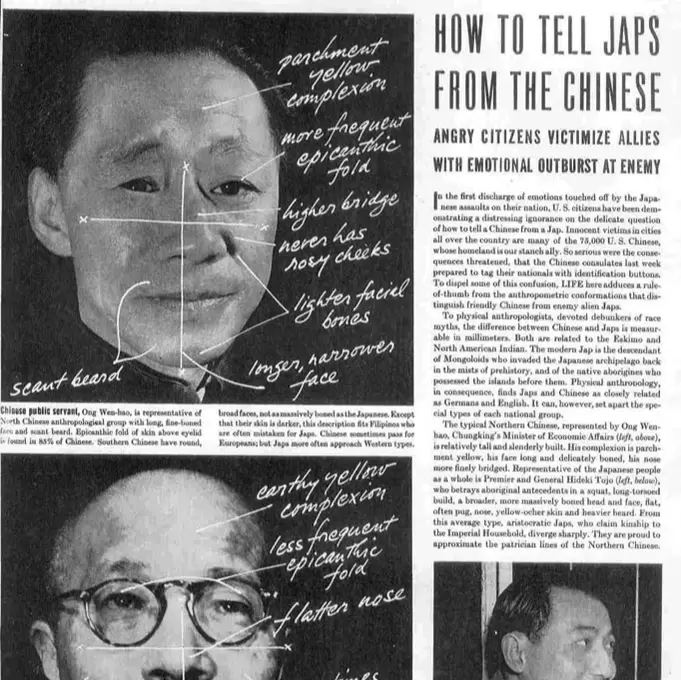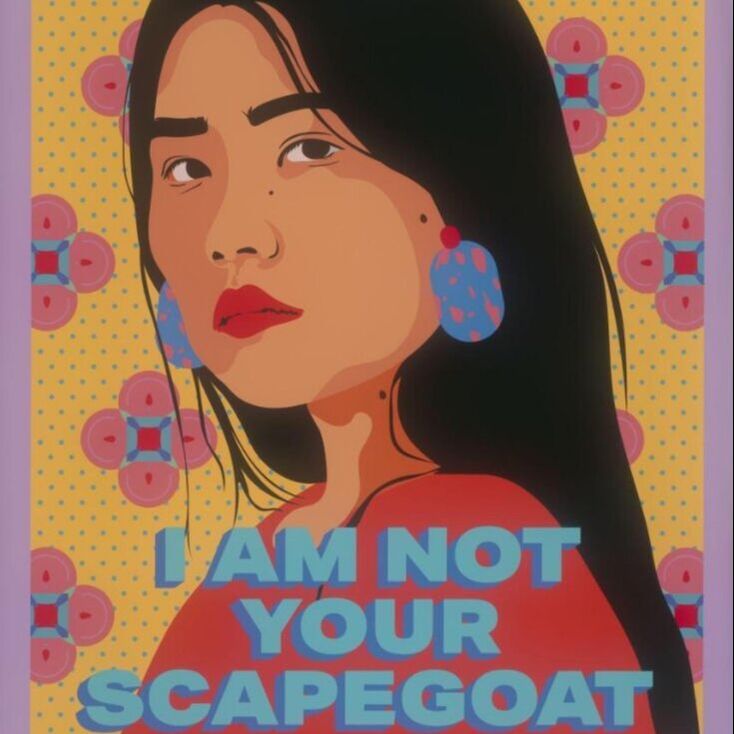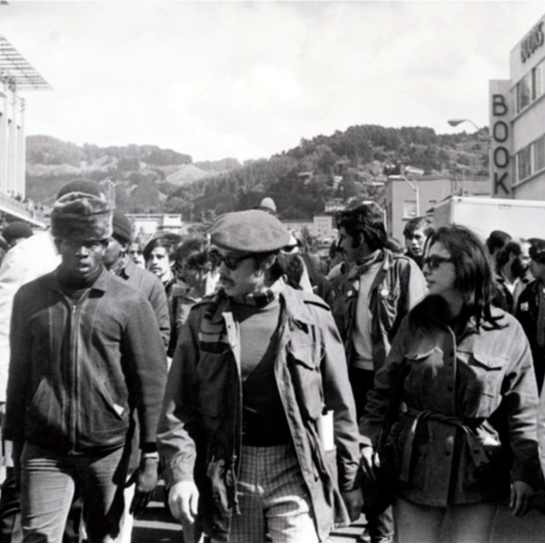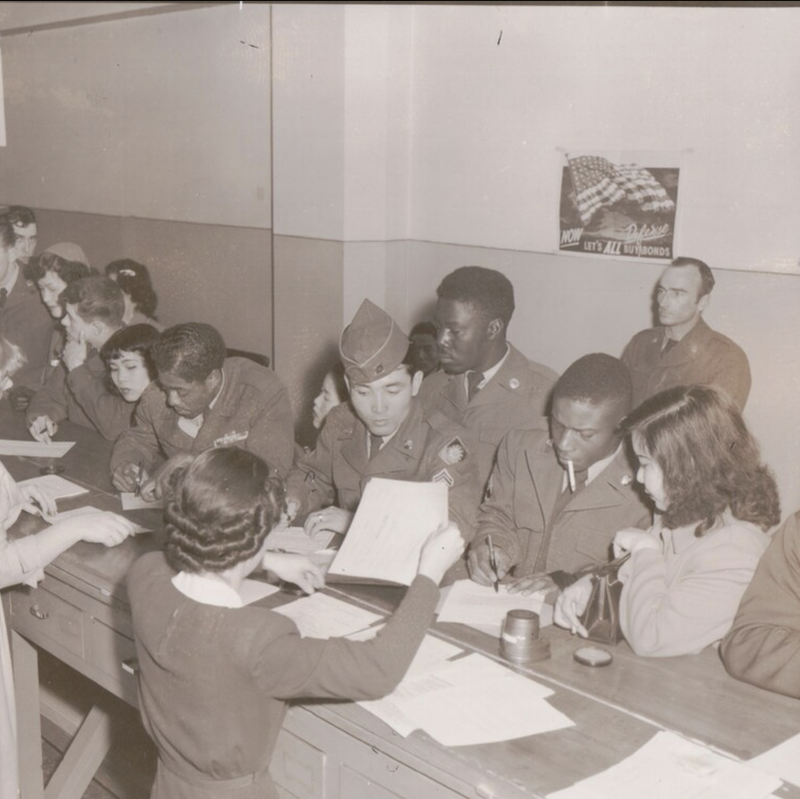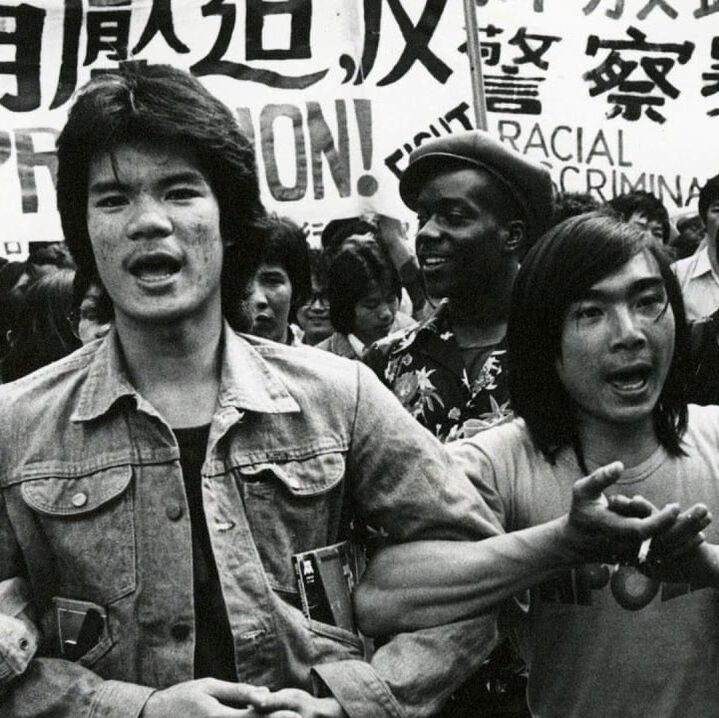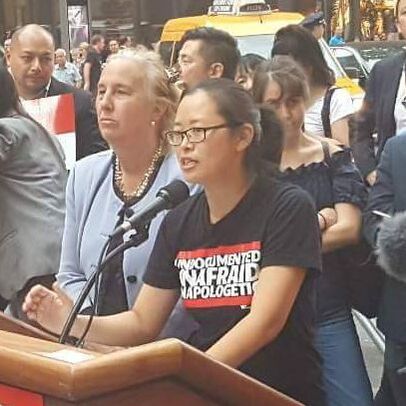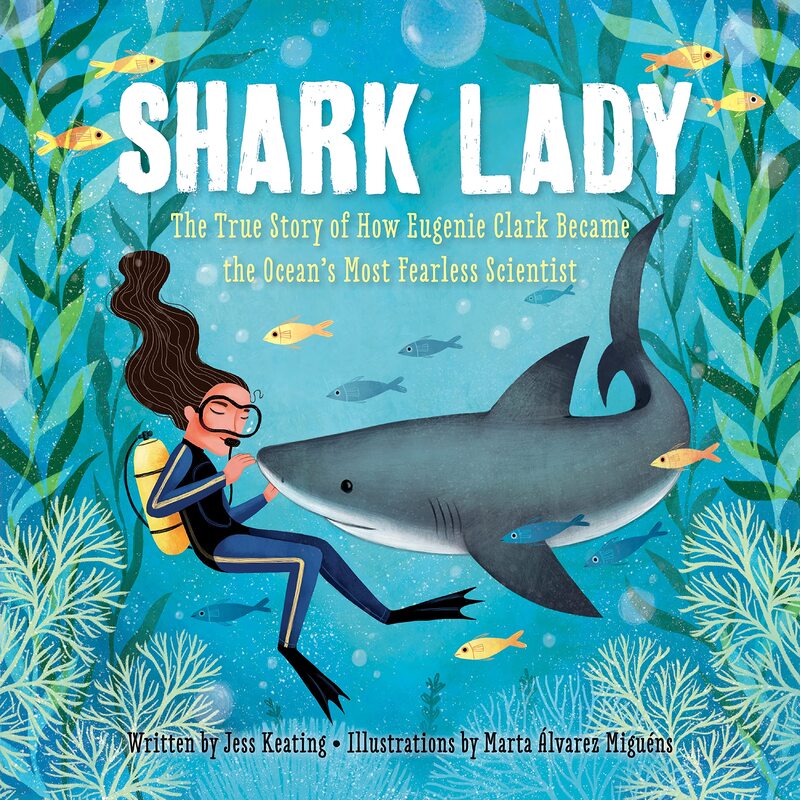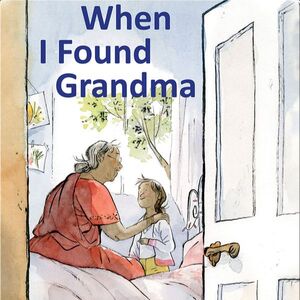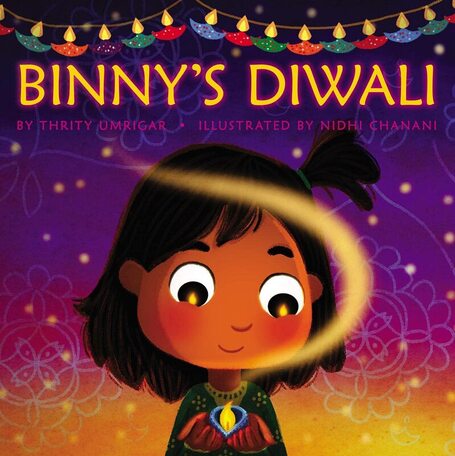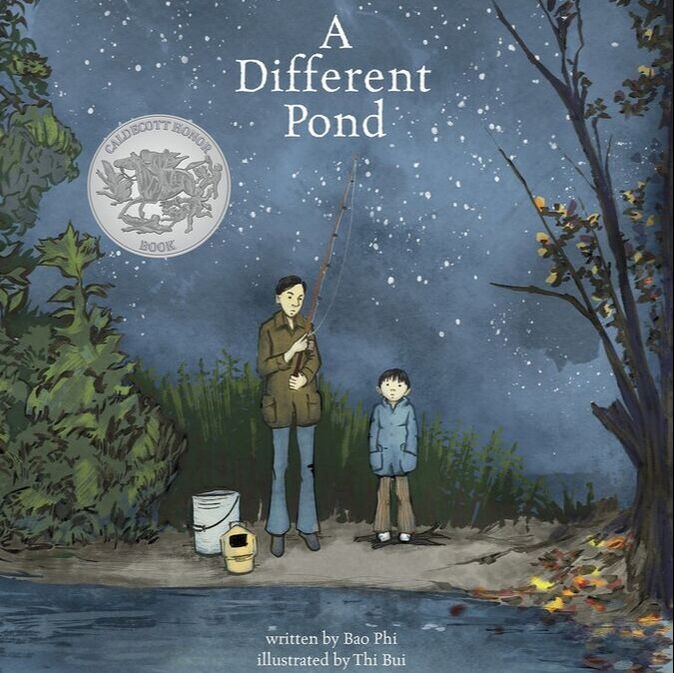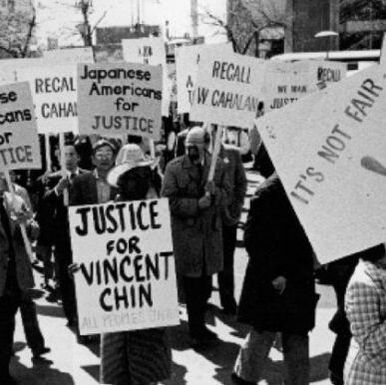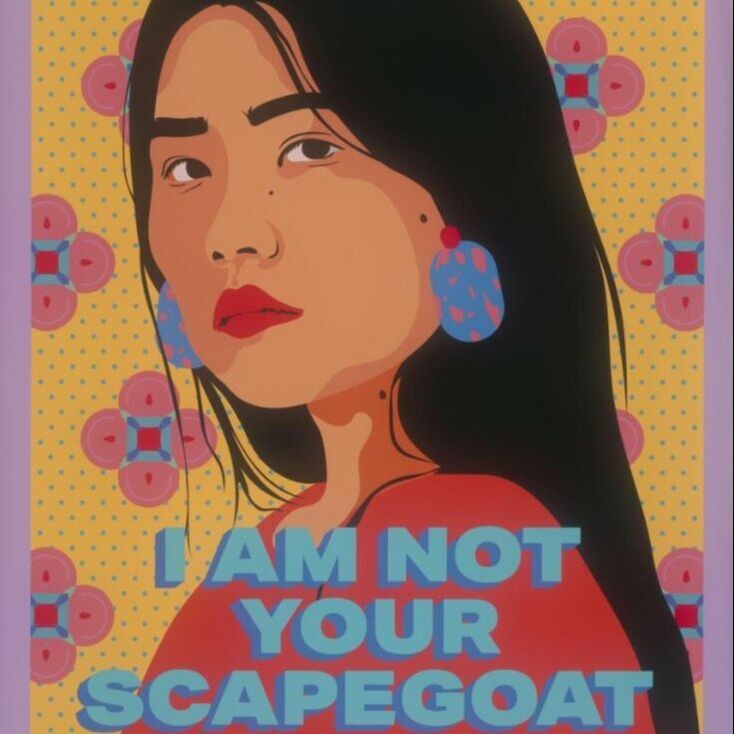Click to jump to the desired time period:
1800-1900
Between the Lines: Stereotypes of Asian American Women in Policy
This lesson plan explores 100+ years of American immigration policy and how it has constructed and reinforced stereotypes of Asian American women. Students will conduct extended document-based questions (DBQ) on foundational American immigration policies, including the Page Act (1875), War Bride Acts (1945-1947), and American Acts of (1982 & 1987). Students will also make historical connections between stereotypes and policy narratives to present-day events, including the 2021 Atlanta spa shootings. Additional activities include media and poetry analysis.
|
Smallpox, Fear & Racism During 1800s San Francisco
This lesson plan covers the creation of government policies based on racial scapegoating during pandemics, specifically in the San Francisco Chinatown smallpox pandemics. Students will connect how xenophobia and racism continue in the COVID-19 pandemic. Activities include mapping stereotypes, text evaluation, and political cartoon analysis.
|
Anti-Semitism & Xenophobia During 19th Century Epidemics
This lesson plan covers how our government has created policies based on anti-semitism and racial scapegoating during pandemics, specifically during the typhus and cholera epidemics in 19th century New York. Students will connect how xenophobia and racism continue in the COVID-19 pandemic. Activities include text evaluation and letter writing.
|
What's the Message?
This educational resource created in collaboration with Time for Kids explores the connections between racial scapegoating and national health crises. The worksheet serves a companion to Time for Kids' child-friendly article, "Calling for Change," which covers activists' responses to rises in anti-Asian racism in the COVID-19 pandemic.
|
Chinese in the Mississippi Delta
This unit explores the history of Chinese in the Mississippi Delta who immigrated over 150 years ago to work on sugarcane and cotton plantations, replacing Black labor in the wake of the emancipation of slavery. With a variety of interactive activities and using content from the book, Sugar by Jewell Parker Rhodes, students will make historical connections between these stories and the real-life legacies of Chinese immigrants that built communities across the Mississippi Delta.
|
Transcontinental Railroad
How much do we know about history beyond Europe? This lesson plan addresses the European biases in the average AP curriculum by teaching about the specific push and pull factors that brought Chinese immigrants to the United States and their work on the Transcontinental Railroad. Activities include a mini DBQ and a class discussion about historical biases.
|
Chinese Exclusion Act
Our immigration laws have the opportunity to open doors for many people; however, they also have the power to discriminate and marginalize other groups. This lesson plan covers immigration cases that shaped what it means to be Chinese American, how racism has influenced immigration policies, and how Chinese immigrants "Made America Great." Activities include a mini DBQ, practice with the S.P.Y. method, and a class discussion.
|
Building the Transcontinental Railroad
This lesson studies the push and pull factors that brought Chinese immigrants to the U.S., how they were treated upon their arrival, and the creation of the Transcontinental Railroad.
|
Chinese Exclusion & Community Resistance
This two-lesson unit navigates the lead up to the Chinese Exclusion Act while centering the efforts of community activists and Supreme Court cases that combatted racism and xenophobia.
|
Oral History Project
This oral history assignment asks students to take ownership of their own immigration histories. The assignment focuses on a particular "primary source," an object that represents the family's immigration journey in some way. Students interview their parent or other family member and write a reflection essay based on these conversations.
|
Brilliant Boba
Brilliant Boba is a unique resource for educators to center Asian American voices in their classrooms through art and narrative, and to plant seeds for learning and empathy. This bite-sized resource kit was designed by artists and educators to easily integrate Asian American voices, social-emotional learning, and art into learning spaces facilitating empathy and creative thinking. Educators can choose their own story or artwork or use a ready-made plan.
|
1900-1965
Immigrant Women Do It All: Influence of Picture Brides
This lesson plan centers around the history of Korean and Japanese picture brides in the United States to explore themes of gender roles, identity, and stereotypes. Students will examine the conformity and rejection of gender roles, connecting legacies of the picture brides and characters in the modern Korean-American film, Minari. Activities include film clip analysis and self-reflection of personal and familial gender roles.
|
Survival and Resistance: Creativity of Asian American Men
This lesson plan centers around the history of Chinese men detained at Angel Island Immigration Station and perceptions of Asian men in the United States to explore themes of masculinity and femininity, gender roles, identity, and stereotypes. Students will make connections between art and cultural work created throughout Asian American movements, including poetry written by Angel Island detainees and Asian American jazz music. Activities include poetry and music analyses.
|
Between the Lines: Stereotypes of Asian American Women in Policy
This lesson plan explores 100+ years of American immigration policy and how it has constructed and reinforced stereotypes of Asian American women. Students will conduct extended document-based questions (DBQ) on foundational American immigration policies, including the Page Act (1875), War Bride Acts (1945-1947), and American Acts of (1982 & 1987). Students will also make historical connections between stereotypes and policy narratives to present-day events, including the 2021 Atlanta spa shootings. Additional activities include media and poetry analysis.
|
1924 Immigration Act: the Most Racist Immigration Law of All Time?
Who do our immigration laws serve? In this 3 day lesson plan, students will learn about the restrictive history of immigration policies and the racism behind them. This lesson plan focuses on "New Wave” immigration, the ideas of Nativism, and other lead ups to the 1924 Immigration Act. Activities include T-Q-A discussion and a review about nativism, Know-Nothings, the Mexican American War, and the Chinese Immigration Ban.
|
1965 Immigration Act & Model Minority Mythology
The 1965 Immigration & Nationality Act ended racist quotas of previous eras and opened the gates to a more colorful and diverse country. These changing demographics not only transformed the face of America, it also contributed to new stereotypes of a historically excluded and maligned population: Asian immigrants. With the popularization of the model minority myth, Asian immigrants became symbols of immigrant success--as well as wedge groups against other struggling communities. Using the pivotal 1965 Immigration & Nationality Act as an entry point, this lesson unpacks the causes leading to the creation of the model minority myth, as well as the myth's harmful effects on all people of color.
|
Racial Identity & American Citizenship in the Court
Students will study the history of Bhagat Singh Thind and his supreme court case in a fight for citizenship. Students will learn about the different ways the U.S. defined different races and the racism in determining citizenship. Activities include a compare and contrast of Takao Ozawa's case to Bhagat Singh Thind's case and a US Census maker role play.
|
Constitutional Rights of American Citizens
Students will learn about the infringement of Japanese Americans' constitutional rights after internment and Fred Korematsu's famous Supreme Court case. Activities include mind mapping and a timeline of voting rights.
|
World War II: Good Asian/Bad Asian
This two-lesson unit studies the complex racial dynamics of the WWII and post-WWII periods, wherein the paths of Japanese and Chinese Americans diverged sharply. Students will also learn about the impact of the 1960s Civil Rights Movement on immigration.
|
Oral History Project
This oral history assignment asks students to take ownership of their own immigration histories. The assignment focuses on a particular "primary source," an object that represents the family's immigration journey in some way. Students interview their parent or other family member and write a reflection essay based on these conversations.
|
Brilliant Boba
Brilliant Boba is a unique resource for educators to center Asian American voices in their classrooms through art and narrative, and to plant seeds for learning and empathy. This bite-sized resource kit was designed by artists and educators to easily integrate Asian American voices, social-emotional learning, and art into learning spaces facilitating empathy and creative thinking. Educators can choose their own story or artwork or use a ready-made plan.
|
1965-Present
Cross-Racial Solidarity Movements & the Formation of the Asian American Identity
How did Asian Americans and African Americans work together during the Civil Rights era? In this lesson plan, students learn about solidarity between Asian Americans and African Americans and how the Black Power movement influenced Asian American activism. Topics include the Third World Liberation Front, and what it means to be Asian American.
|
Between the Lines: Stereotypes of Asian American Women in Policy
This lesson plan explores 100+ years of American immigration policy and how it has constructed and reinforced stereotypes of Asian American women. Students will conduct extended document-based questions (DBQ) on foundational American immigration policies, including the Page Act (1875), War Bride Acts (1945-1947), and American Acts of (1982 & 1987). Students will also make historical connections between stereotypes and policy narratives to present-day events, including the 2021 Atlanta spa shootings. Additional activities include media and poetry analysis.
|
The Fight for Ethnic Studies
Students will learn about the Third World Liberation Front, the Asian American Political Alliance, and the movement of students of color organizing on college campuses for ethnic studies curriculum. Activities include researching local calls for ethnic studies and authors from communities of colors.
|
The Impact of the Vincent Chin Case
Students will learn about the 1982 murder of Vincent Chin, his legacy, and the first instance of federal hate crime laws being used in a case involving an Asian American. Activities include defining hate crimes and comparing the fight against discrimination from past to present.
|
The 1992 L.A. Riots & Civil Unrest
Students will learn about the history of Asian immigrants settling in Black communities, the 1992 LA riots following the unjust beating of Rodney King and the murder of Latasha Harlins by a Korean American convenience store owner, and these two communities' legacy of activism and civil rights. Activities include root cause analysis and finding parallels to the LA riots.
|
Tereza Lee and Undocumented Asian America
Students will learn about the 2001 DREAM act and immigration reform using Tereza Lee as a case study. Activities include researching what it means to be an undocumented immigrant and searching for undocumented immigrant's stories.
|
Shark Lady, by Jess Keating & Marta Alvarez Miguens
Shark Lady introduces children to the life of trailblazing Asian American female scientist Eugenie Clark, a marine biologist known for her research on shark behavior. This resource includes discussion questions, classroom activities, background information on other AAPI scientists, and much more!
|
When I Found Grandma, by Saumiya Balasubramaniam & Qin Leng
When I Found Grandma is an insightful and endearing portrayal of a grandparent-grandchild relationship that is evolving and deeply loving, as Maya and Grandma navigate cross-cultural contexts and generational differences. This resource includes background information on South Asian American immigration, classroom activities, and much more!
|
Binny's Diwali, by Thirty Umrigar & Nidhi Chanani
Binny's Diwali is a delightful look at the holiday of Diwali: Festival of Lights! Learn along with Binny’s classmates as she shows them the glowing clay lamps, called diyas, explains the fireworks of gold, green, and red that burst through the night sky, and shares delicious pedas and jalebis treats.
|
A Different Pond, by Bao Phi & Thi Bui
A Different Pond is a powerful, honest glimpse into a relationship between father and son - and between cultures, old and new. This resource is designed for use alongside Capstone Publishing's "A Different Pond Reader's Guide" (available here), which provides discussion questions and activities. Our historical summary fills in the gaps, providing a brief introduction of the Vietnam War and the lasting effects the war on refugee families.
|
Yellow Power, Vincent Chin, and Asian American Identity
This two-lesson unit chronicles the development of the Asian American identity as a way of building power and dismantling white supremacy. Using the murder of Vincent Chin as a case study, students will learn about cross-racial coalitions and movement-building.
|
Empathy during COVID: Restorative Justice Guide
This facilitation guide utilizes restorative justice dialogue circles to reflect on and discuss the causes of anti-Asian racism, which has sharply increased during the COVID-19 pandemic. This resource uses restorative justice principles to foster empathy among students and other community members during difficult times.
|
Oral History Project
This oral history assignment asks students to take ownership of their own immigration histories. The assignment focuses on a particular "primary source," an object that represents the family's immigration journey in some way. Students interview their parent or other family member and write a reflection essay based on these conversations.
|
Brilliant Boba
Brilliant Boba is a unique resource for educators to center Asian American voices in their classrooms through art and narrative, and to plant seeds for learning and empathy. This bite-sized resource kit was designed by artists and educators to easily integrate Asian American voices, social-emotional learning, and art into learning spaces facilitating empathy and creative thinking. Educators can choose their own story or artwork or use a ready-made plan.
|

